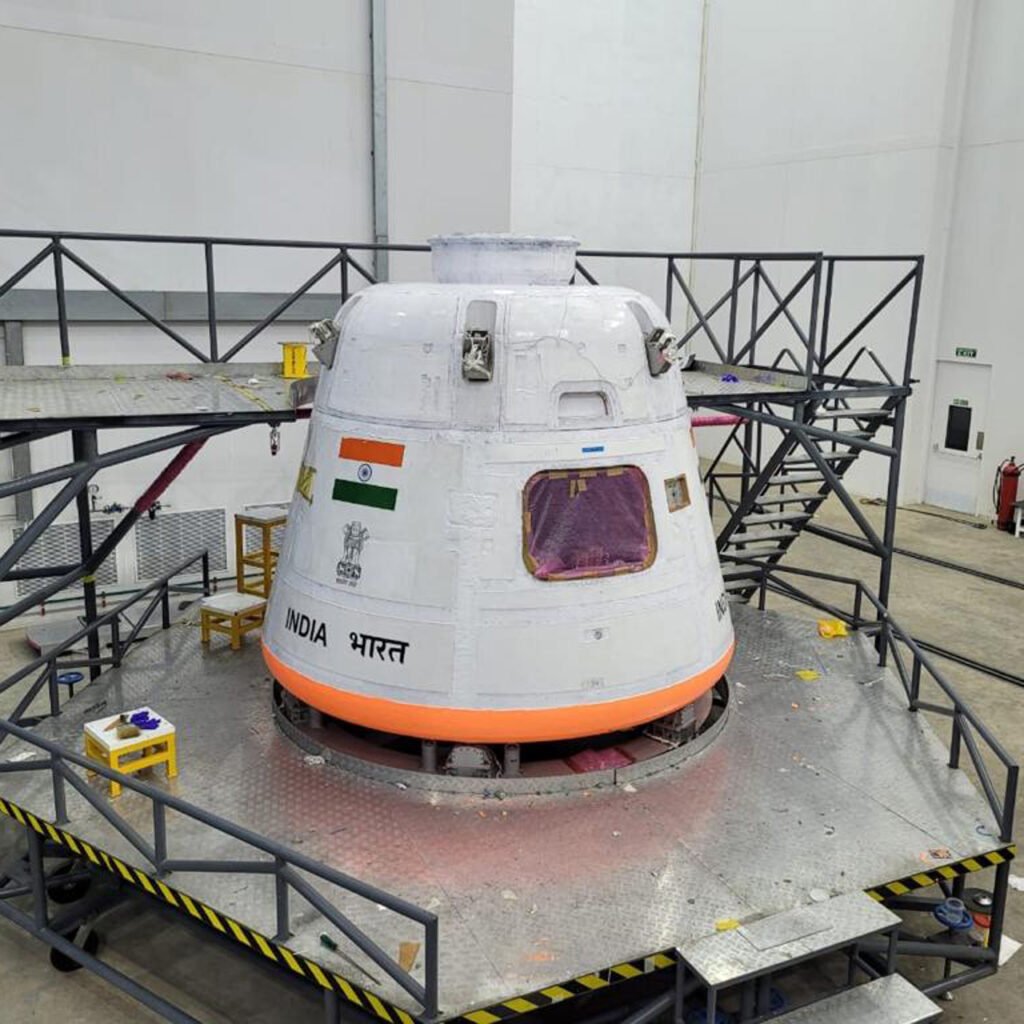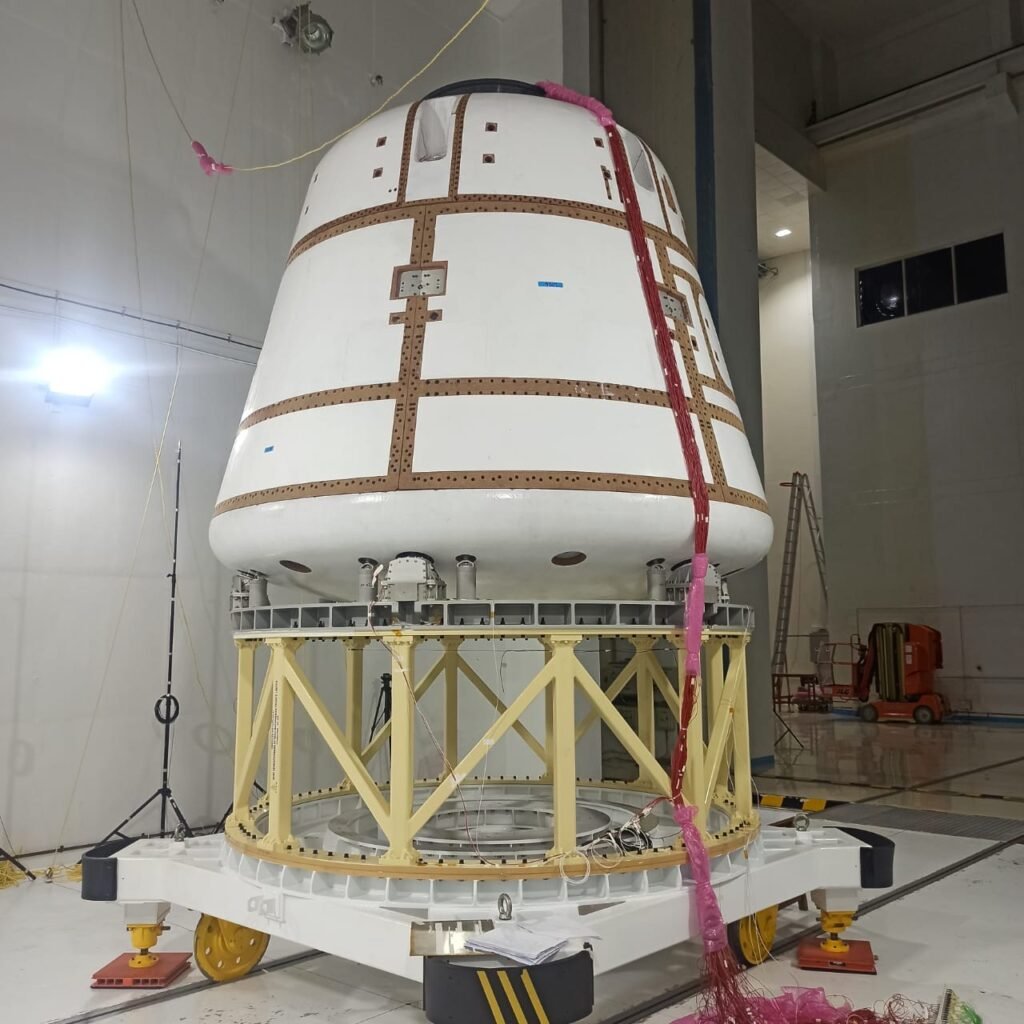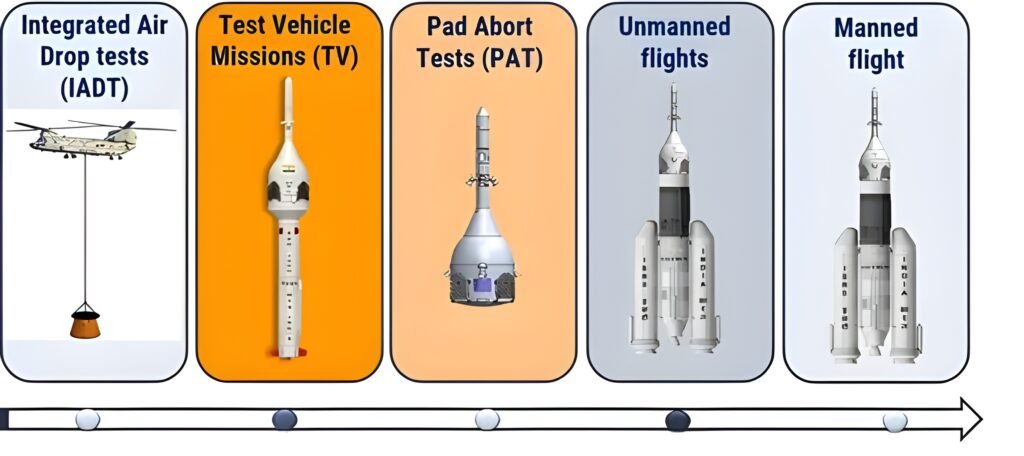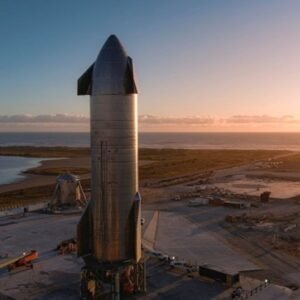Pioneering Human Space Exploration: The Role of ISRO’s Human Space Flight Centre (HSFC)
The primary objective of the Human Space Flight Centre (HSFC) is to spearhead ISRO’s Gaganyaan program by coordinating efforts and directing all related activities from various ISRO centers, research laboratories in India, academic institutions, and industries towards the successful execution of the mission. As the leading hub for human space flight operations, HSFC upholds rigorous standards of dependability and human safety in conducting research and development in cutting-edge technology domains. These include but are not limited to life support systems, Human Factors Engineering, Bioastronautics, Crew training, and Human rating & certification. These focal areas are integral for the future sustainability of human space flight endeavors, such as rendezvous and docking, building space stations, and collaborative manned missions to the Moon, Mars, and nearby asteroids.

The Vision of the Gaganyaan Project and its Technological Milestones
The Gaganyaan project aims to showcase India’s human spaceflight capabilities by launching a 3-member crew into a 400 km orbit for a 3-day mission, ensuring their safe return by landing in the Indian sea waters.
This ambitious project is being executed through a well-orchestrated strategy that leverages the in-house expertise, Indian industrial experience, the intellectual potential of the country’s academia and research institutions, and state-of-the-art technologies from international agencies. Essential to the success of the Gaganyaan mission is the development of several critical technologies. These include a human-rated launch vehicle for the safe transport of the crew to space, a robust Life Support System to create a habitable environment for the crew in space, provisions for crew emergency escape, and the comprehensive evolution of crew management aspects for their training, recovery, and rehabilitation.
To ensure preparedness, the project outlines various precursor missions aimed at demonstrating the readiness of the technology involved. These missions encompass the Integrated AirDrop Test (IADT), Pad Abort Test (PAT), and Test Vehicle (TV) flights. The unmanned missions preceding the manned mission will serve as critical tests to verify the safety and reliability of all systems involved.


The Human-Rated LVM3: ISRO’s Stalwart for the Gaganyaan Mission
The LVM3 rocket, a well-established heavy lift launcher by ISRO, has been designated as the chosen launch vehicle for the Gaganyaan mission. Comprising solid, liquid, and cryogenic stages, the LVM3 launch vehicle has been meticulously reconfigured to meet the stringent human-rating criteria, now known as the Human-Rated LVM3 (HLVM3). The HLVM3 is specifically designed to efficiently propel the Orbital Module to the intended Low Earth Orbit, situated at an altitude of 400 km.
An integral component of the HLVM3 is the Crew Escape System (CES), equipped with a set of swift-acting, high-burn rate solid motors. This crucial system ensures the safe ejection of the Crew Module and its occupants to a secure distance in the event of an emergency, whether at the launch pad or during the ascent phase.

The Orbital Module
The Orbital Module (OM), orbiting the Earth, is composed of the Crew Module (CM) and the Service Module (SM). The OM is equipped with cutting-edge avionics systems, incorporating redundant elements to prioritize human safety. The CM provides a habitable space with an environment akin to Earth within the realm of space. Its double-walled construction comprises a pressurized metallic Inner Structure and an unpressurized External Structure, fortified with a Thermal Protection System (TPS). Housing vital crew interfaces, human-centric apparatus, life support systems, avionics, and deceleration mechanisms, the CM is designed for secure re-entry, ensuring the crew’s safety during descent until touchdown. Meanwhile, the SM offers indispensable support to the CM while in orbit, housing thermal, propulsion, power, avionics systems, and deployment mechanisms.

Innovations Safeguarding Human Life in the Gaganyaan Mission
Ensuring human safety is the foremost priority for the Gaganyaan mission. To uphold this commitment, a spectrum of innovative technologies, encompassing advanced Engineering systems and Human-centric solutions, are currently under development and implementation.


Nurturing Astronaut Prowess for the Gaganyaan Expedition
In Bengaluru, the Astronaut Training Facility has been meticulously established, offering a comprehensive spectrum of training modules. These encompass Classroom training, Physical Fitness regimens, Simulator drills, and Flight suit familiarization. The training curriculum spans a diverse array of subjects, including academic courses, an in-depth understanding of Gaganyaan Flight Systems, orientation to Microgravity through Parabolic Flights, Aero-medical preparations, Recovery, and survival techniques, adeptness in Flight Procedures, and hands-on experience with Crew Training Simulators. Furthermore, the training regimen incorporates Aeromedical training, regular flying practice, and the practice of Yoga, all crucial elements of the holistic training program.

Advancements in Crew Module Development for Gaganyaan Mission
The Crew Module (CM) serves as the pressurized enclosure that maintains an earth-like atmosphere for the astronauts during the Gaganyaan mission. Currently, in various stages of development, the CM for the Gaganyaan mission has reached a critical phase. The Test Vehicle Abort mission-1 (TV-D1) incorporates an unpressurized version of the CM, meticulously integrated and tested, ready for transportation to the launch complex. This version of the CM, similar in size and mass to the actual Gaganyaan CM, is equipped with comprehensive systems for deceleration and recovery, including an array of parachutes, recovery aids, actuation systems, and pyrotechnics.
The CM is extensively instrumented to capture vital flight data, evaluating the performance of multiple systems during the mission. Following the touchdown in the Bay of Bengal, the Indian Navy’s dedicated vessel and diving team will oversee the recovery of the Crew Module.

Prepared for its imminent launch, the first development flight Test Vehicle (TV-D1) is equipped with a single-stage liquid rocket customized for the specific requirements of this abort mission. The payloads include the Crew Module (CM), the Crew Escape Systems (CES) with their fast-acting solid motors, the CM fairing (CMF), and Interface Adapters. The flight simulation will replicate the ascent trajectory’s abort condition, corresponding to a Mach number of 1.2, as anticipated during the Gaganyaan mission.
The Journey of Crew Model
The journey of the Crew Module has seen it undergo exhaustive electrical testing, including an acoustic test, at ISRO‘s facility in Bengaluru. Subsequently dispatched to SDSC-SHAR, it will undergo vibration tests and pre-integration with the Crew Escape System before the final integration with the Test Vehicle at the Launch Pad. This significant milestone within the Gaganyaan program marks the integration of a near-complete system for a comprehensive flight test. The successful execution of this test flight will pave the way for subsequent qualification tests and unmanned missions, culminating in the historic first Gaganyaan mission with Indian Astronauts.
Advancing Safety Measures: Drogue Parachute Deployment Tests for Gaganyaan Mission
Vikram Sarabhai Space Centre (VSSC)/ISRO recently accomplished a significant feat by conducting a series of Drogue Parachute Deployment Tests in collaboration with the Aerial Delivery Research and Development Establishment (ADRDE)/DRDO at the Rail Track Rocket Sled (RTRS) facility of the Terminal Ballistics Research Laboratory, Chandigarh, from August 8 to 10, 2023.

Integral to the safe transport of astronauts during the Gaganyaan mission, the drogue parachutes act as a vital mechanism for stabilizing the crew module and reducing its velocity to a secure level during re-entry.
These meticulously designed conical ribbon-type parachutes, deployed through pyro-based mortar devices, boast a diameter of 5.8 meters and employ a single-stage reefing mechanism, ensuring controlled descent and minimal opening shock.
The comprehensive tests at the RTRS facility simulated various real-world scenarios to rigorously evaluate the performance and reliability of the drogue parachutes. These tests included simulations of maximum reefed and dis-reefed loads, as well as deployment under conditions reflecting the maximum angle of attack encountered by the Crew Module during its mission.

The successful completion of these RTRS tests signifies a crucial qualification milestone for the drogue parachutes, solidifying their readiness for integration into the upcoming Test Vehicle-D1 mission. These tests complement the earlier successful RTRS tests of Pilot and Apex cover separation parachutes, underscoring the significant progress in the development of the Gaganyaan mission’s parachute system.
The intricate parachute sequence for the Gaganyaan crew module’s deceleration system encompasses a total of 10 parachutes, each playing a critical role in ensuring a safe and controlled descent for the crew module during its return to Earth.
Indian Space Agency Isro Launched :-Chandrayan 3 Launch to Moon





